LEARNING TO DRIVE A PACE CAR IS FRIGHTENING, FURIOUS FUN

LOTS OF TRACKS get fogged in. Few seem so determined about it as Mazda Raceway Laguna Seca on summer mornings. While race cars crackle to life in the infield, Robert Orcutt steers a Mazda6 out onto the circuit. A bank of lights flash yellow across the roof and light up the haze. It’d be beautiful if only we could see where this pace car is going. “Good morning, race control,” Orcutt says into a two-way radio, a declaration more than a salutation. It’s 7:45 a.m., and the chief pace-car driver’s long day is just getting started.
On Saturday morning, the first race day of the Monterey Pre-Reunion the week before the Rolex Monterey Motorsports Reunion main event, I thought I had an idea of what it’d be like to drive a pace car. I’ve followed one around, after all, and watched them dart into traffic too many times to count. I thought I knew Laguna well, too, and believed that after many track days and driving schools I’d become reasonably quick there. By 8 a.m., I’d disabused myself of all those notions.
For 20 minutes you can’t see a thing. You can’t see the next corner. You can’t see the flag stands. You can’t see traffc or the two other pace cars circling in the mist. These early morning sessions are run for a reason: Asking someone to race in these conditions, on a wet and slippery track, would be damned dangerous. As the fog burns off and corners emerge, it takes an experienced set of hands to make the call when the track is ready for a race.
That’s Orcutt’s call to make.
This story is from the February 2018 edition of Automobile.
Start your 7-day Magzter GOLD free trial to access thousands of curated premium stories, and 8,500+ magazines and newspapers.
Already a subscriber ? Sign In
This story is from the February 2018 edition of Automobile.
Start your 7-day Magzter GOLD free trial to access thousands of curated premium stories, and 8,500+ magazines and newspapers.
Already a subscriber? Sign In
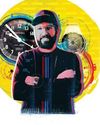
Bradley Price Watches Over Cars
I don't wear a watch, and I think I know why: a permanent injury.
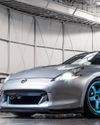
The Real Fate Of The Furious
PaulWalker left behind a treasure trove of collector cars
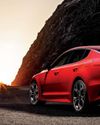
Kia - Stinger A Year With South Korea's Star Sedan
Perfectly balanced, as all things should be
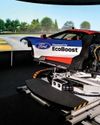
Reality Bytes
HOW CLOSE IS A PROFESSIONAL RACING SIMULATOR TO THE REAL THING? WE SENT OUR PRO DRIVER TO FORD’S PERFORMANCE TECHNICAL CENTER TO FIND OUT

There Goes Your Hero
Ford’s new-Mustang Shelby GT500 can save the day regardless of what kind of mood you're in

FOUR SEASONS INTRO -N MARKS THE SPOT
Our year with Hyundai’s hottest hatch is off to a blistering, blissful start
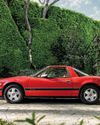
1988-91 Buick Reatta
THE BUICK REATTA was first conjured in the early 1980s in response to a perceived gap in the marque’s lineup.

THE FULL PACKAGE
The world needs Teslas,but it wants the Taycan

Wall Art
All these years later, the Lamborghini Countach is still the stuff of dreams.

MAGICAL MINI TOUR
A ROCKING JOURNEY THROUGH ’60S LONDON IN A VINTAGE VERSION OF THE QUINTESSENTIAL 60-YEAR-OLD BRITISH CITY CAR